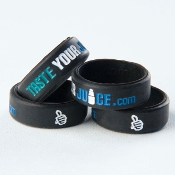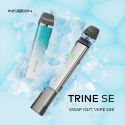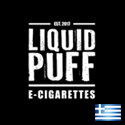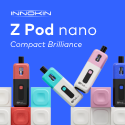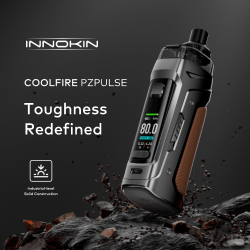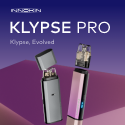Hi Phil,
Judging by your productivity and from having heard you say it many times, you’re busy. You’ve also said you read every email you get. To me, that means I should keep it short and I’ll try to do that.
We’re about the same age, but I don’t wear Sketchers and I hadn’t heard of vaping until 2014! At that time, I walked into a local vape shop and left with some variation of a Vision Spinner, a ProTank, 6mg e-liquid and threw away a pack of cigarettes. I had no idea what I was doing with these new products, so I started researching. I found you on YouTube. You made complete sense to me and I want to thank for giving me direction, the information I needed, resources, knowledge and the incentive to stay with it, which I have.
I never did become one of the ‘Vaping Bros.” I’ve never built a coil, though I’d like to learn (the Ares 2 is at the top of my list.) I’ve never been to a cloud comp and never will. Instead, my curiosity turned into a commitment to help others with harm deduction. I’m a writer and advertising graphic designer so I offered my services to an innovative vape shop in exchange for e-liquid!
In 2016, NJ was facing legislation that would ban flavored e-liquid. I’m not on FB or Twitter so, I reached out to you at that time in an email. You gave me Dan Donahue’s contact info. That started my official efforts as an advocate. I’ve been in contact with Greg Connelly, NJVRC and, to date, 47 legislators in my state. No need to tell you how, 4 years later, the flavor ban in NJ ending things… Including my services to my local vape shop (now closed) and my e-liquid supply. As an aside-A big problem we’re finding in NJ is that many online vendors will not ship to us. Possession and out-of-state sales are not illegal here, but the law is written so poorly that no one knows how to interpret it. I will not let my government un-do my hard work and legislators don’t get to dictate how I keep myself in good health. Right now things are pretty bad here, but I’ll figure it out in time.
Please forgive the rant. Now to my final point:
Your “Do You Get It Now” video from April 18, 2020 stuck with me.
My assessment of the situation is the same. On May 1, 2020, I was watching The Rachel Maddow Show on MSNBC. She had a graphic behind her that read, “CDC, Are You OK?” At the end of the program, she asked her viewers to send her anything they had that might clarify what is going on with the CDC and their distinct lack of credibility. I used the opportunity to make my own statement publicly about how and why CDC is unquestionably in part to blame for the COVID-19 catastrophe.
I’m including a copy of my letter to MSNBC at the bottom of this email. My point in doing that is to let you know there are a lot of us that feel as passionately as you do and are doing what we can with you for a common cause. I understand completely if the letter below is too cumbersome to get through and that it may not be something you’re interested in reading. There is no obligation. But, if nothing else, part of my inspiration to make the effort in writing it was from all the years of work you and Dimitri have done for all of us. Thank you both for all of it.
Yours (But, not a Vaping Bro),
John
Re: “CDC, Are You OK?”
Dear Rachel,
This correspondence might relate directly to your call for information on your May 1, 2020 broadcast. However, it’s a small crack in a large wall. I’m certain something in this is part of a broader picture.
CDC, FDA, WHO, The Surgeon General and certainly, Stanton Glantz and Dharma Bhatta have lost a critical amount of credibility and trust by demonstrating blunder after blunder through a false narrative guided by ‘convenient facts’ and biases which were clearly, at this point, directed by sources other than science and accurate data.
To bring in another player, on September 11, 2018, Scott Gottlieb, from a statement on FDA’s website, acknowledged approximately half a million people die of smoking related illnesses each year in the United States. He explained that it is combustion, not nicotine that is killing people and, of electronic cigarettes and nicotine vaping, he said further, “We saw an important opportunity. We saw a chance to leverage the potential benefits of new and non-combustible technology to allow more adults to get nicotine from sources that could pose a lot less harm than smoking cigarettes. We continue to believe in this central concept.” However, relating to teen vaping, he continued with, “Unfortunately, I now have good reason to believe that it’s reached nothing short of an epidemic proportion of growth.”
CDC’s website and dumpster fire of misinformation on this subject includes statements such as, “You have an important role to play in addressing this public health epidemic.” It takes very little research to find innumerable false assessments by CDC on the, “teen vaping epidemic.” Volumes of incorrect, non-scientific information lacking peer review and data had been published prior to what they called the “EVALI epidemic.” EVALI was first mentioned by CDC in April of 2019, over a year after their anti-vaping campaign was rooted deeply into our culture. Public Health learns of a new “vaping illness” that is making people sick and killing others. As of February 18, 2020, CDC reported 2,807 cases of hospitalization with 68 of those as confirmed deaths.
Available information indicates there are approximately thirteen million adults who have successfully transitioned from combustible tobacco to commercially available vapor nicotine products. It’s reasonable to consider there are larger numbers but many people have declined to admit the use of these products due to the stigma created courtesy of CDC and company. Nicotine vaping products were first introduced in the United States in approximately 2007. As far as has been reported publicly, there are no cases of disease or death caused by electronic cigarettes or nicotine vaping. The only harm caused is under-aged use, which, to my way of thinking, is a behavioral problem rather than epidemiology.
CDC ignored significant studies from Dr. David Abrams and Dr. Raymond Niaura from the Department of Epidemiology and Behavioral Science at NYU School of Global Public Health. Similar studies came from Dr. Michael Segal of Boston University School of Public Health, Konstantinos Farsalinos, MD from Onassis Cardiac Surgery Greece, Department of Pharmacology, University of Patras, Greece, The Royal College of Physicians and Michelle Minton and her colleagues at reason.org. The verdicts are that vapor products containing nicotine are roughly 95% safer than tradition tobacco and, in no case, was the CDC’s EVALI “epidemic” related to these products. As we’ve all learned though a timid, nearly invisible admission from CDC, the 2,807 cases of EVALI were a result from people vaporizing illicit Black Market THC products which were extended with Vitamin E Acetate. The New England Journal of Medicine’s article relaying this information put CDC in a corner.
So, is the CDC OK? The answer seems to be, “No, not at all.” They’ve been politicized and they’ve proven they can be bought. Bloomberg, his House of Democrats, states and anti-tobacco groups directed the CDC’s output to coordinate with an anti-vaping agenda. The Master Settlement Agreement awards states heavily with funds for smoking cessation and damages. The amounts allocated correlate with the number of smokers per state – to the best of my understanding. Vaping caused a multi-billion dollar decrease in smoking over the last thirteen years. It becomes apparent which states want, need and misdirect MSA money by a simple observation of a state’s policies; vaping bans, excessive taxation, over-regulation of vaping products and all forms of prohibition. It’s unfortunate to conclude most states are closely aligned with the public misconception that vaping causes death and teens are victims of, “nothing short of an epidemic.”
People are watching the CDC’s response to COVID-19 with skepticism. The playbook has an uncomfortable familiarity. Their dialog changes daily, not with real information but through compliance with leaders’ directives. Though somewhat shrouded, the information they produce tends to shift by threat and money, not fact. They’ve demonstrated themselves as a product for political purchase and, again, are seemingly being used as exactly that. Had they not wasted time up until February of 2020 chasing a false youth vaping “epidemic,” resources and publicity might have been used more wisely.
The last year has, in theory, taught most of us what an epidemic is and what it’s not. This time, with COVID-19, it’s real. It’s my perception that CDC has, again, been lured into a very dangerous game refereed by money and politics while spectators die in the seats.
With respect,
John










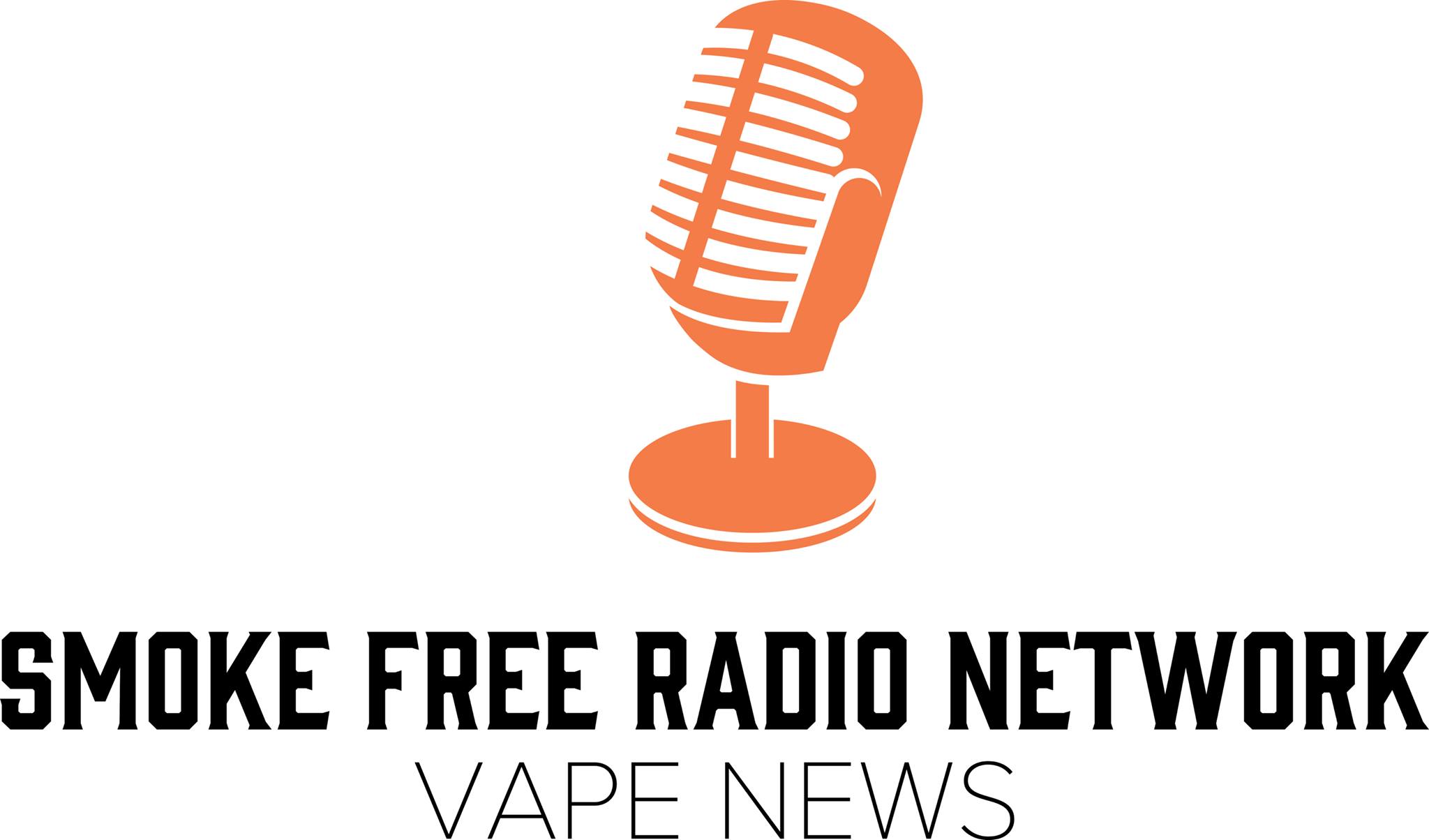



 Store
Store
